Mitsusaburō Ramon
Nacimiento : 1901-10-10, Imamiya, Osaka Prefecture, Japan
Muerte : 1976-05-06
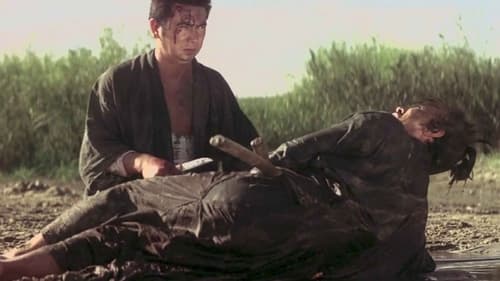
Cuarta de las veintiséis películas basadas en el personaje de Zatoichi, interpretado por Shintarô Katsu. En esta cuarta entrega, un clan yakuza pone precio a la cabeza de Zatoichi, por lo que muchos irán a por "el fugitivo" para ganarse una buena recompensa. Mientras tanto, Zatoichi se reencuentra con un viejo amor, Tane, pero esta ha rehecho su vida con otro hombre.
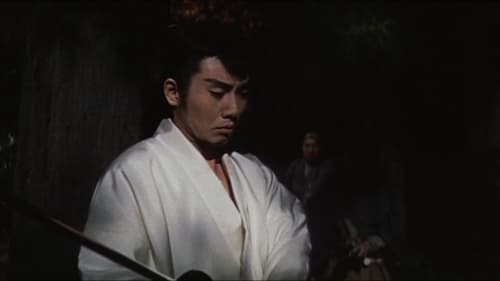
El asesino Tsuke Ryunosuke conoce a una mujer que se parece a su esposa asesinada Hama, y juntos tratar de evitar la venganza que buscan su hermano menor, Utsuki Hyoma de los Shinsengumi. Muchas figuras históricas se encuentran en esta película y supuestamente el carácter de Ryunosuke se basó en una persona de la vida real. Esta es la segunda de la trilogía.

The exciting story of Jirocho and his yakuza gang that controlled the area of the Tokaido during the latter days of the samurai era. Awesome fighting from Katsu Shintaro as One-Eyed Ishimatsu highlights this great tale taken from Japanese history!

Tomoe no Tajû

Film directed by Kenji Misumi.

During the 1200's, legendary Buddhist monk Nichiren returns from his studies to lead Japan out of moral crisis and prepare to fight Mongol invaders by creating a new form of Buddhism. He runs afoul of the existing Buddhist sects and their government supporters and is persecuted. Can Nichiren persevere before the Mogol fleet reaches Japanese shores?

While transporting a bride-to-be in a closed carriage (kago) while during a thunderstorm, a group of servants and onlookers suddenly come upon an apparition of a ghostly white-draped female figure floating down to the ground. As she turns to face the crowd, the woman reveals the disfigured right side of her face. As the procession stands in utter horror, the ghost then takes flight again and down a side street. After the shock wears off, the bride is checked on and everyone is safe in the group. Once the wedding party finally arrives at the groom's home, they apologize for the delay... and proceed to open the kago, only to realize that the bride-to-be is now missing... and all that's left in the carriage is a single white snake slithering about.

Genji Kurô is a master swordsman and entrusted with protecting the ancient sword Kaen by the Otsubo family.

Early film by Kenji Misumi.

Ryu
Part 2 of adventure movie

First part of adventure movie
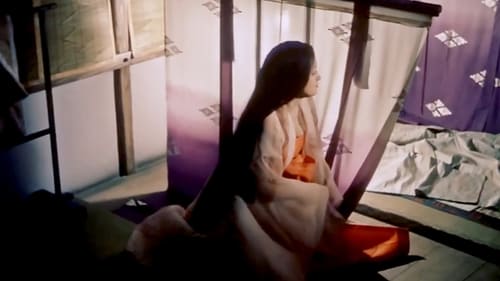
Ryokan
En el Japón feudal del siglo XII, los Taira y los Fujiwara son clanes que luchan por la supremacía. Mientras tanto, en el palacio imperial hay dos cortes: la del emperador en funciones y la de su predecesor.

A tanuki-themed musical.
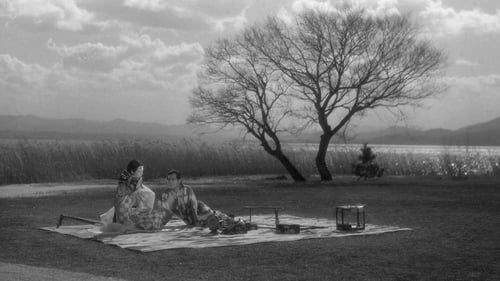
Captain of Tamba Soldiers
En el Japón del siglo XVI, los campesinos Genjuro y Tobei venden sus vasijas de barro a un grupo de soldados en un pueblo cercano, desafiando la advertencia de un sabio local contra la búsqueda de ganancias en la guerra. La búsqueda de riquezas de Genjuro y de la misteriosa Lady Wakasa, así como el deseo de Tobei de convertirse en samurái, corren el riesgo de destruirlos a ellos mismos y a sus esposas, Miyagi y Ohama.

Kii Shigefusa
Gotō Matabei is the most able and fierce samurai of the Kuroda clan. However, he gradually dislikes the ruthless personality of Kuroda Nagamasa and leaves the clan. Seven years later, he joins Toyotomi Hideyori's army. Filmed in 1945 and released in 1952.

Dedication of the Great Buddha is a 1952 Japanese film directed by Teinosuke Kinugasa. It was entered into the 1953 Cannes Film Festival.

Gensaburo Funaki and Oyuki were childhood friends, but Gensaburo misunderstood that Oyuki was hesitant to get married because he had to feed his father and younger brother. I left the town.

Adaptation of the original story by Hida Yoshiro, whose depiction of the world of the yakuza is unparalleled. Gisuke, a weather-beaten yakuza with nostalgia and memories of love in his heart.

Inspector Matsubara
Jewel thieves become interested in an invisibility formula invented by Professor Nakazato and want to use his invention to acquire a diamond necklace called the "Tears of Amour."

Directed by Akira Nobuchi

Jida-geki by Santaro Marune.

A lowly drunken samurai finds an abandoned baby in the woods and takes it home. A gift from a fox. But there's something special about the boy.

According to Donal Richie in The Japanese Film it was meant to do for sumo wrestling what Kurosawa had done for judo in Sanshiro sugata, and that Kurosawa wrote it for Daiei after "drinking up all [his] money" (from his autobiography).

Famed swordsman Araki Mataemon must face his best friend as they are forced to take opposite sides in a vendetta caused by the murder of a family member.

A story about Ômura Masujirô
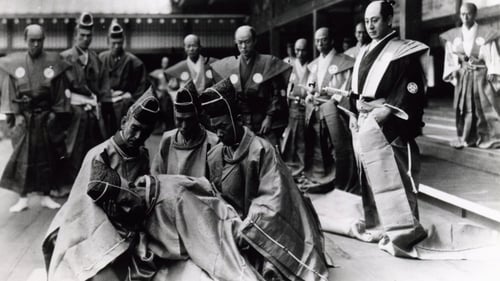
Tokubee Izeki
El 14 de Marzo de 1701, en la real capital de Edo, el señor feudal Asano ataca al señor Kiru mientras se encuentra en tierra sagrada. A causa de esta grave ofensa, Asano es obligado a hacerse el harakiri. Sin embargo, 47 de sus samuráis juran vengar a su amo. Estrenada en dos partes en Japón, la primera de 112 minutos el 1 de diciembre de 1941 y la segunda de 111 minutos el 11 de febrero de 1942. (FILMAFFINITY)

A 1941 Japanese film directed by Shinzo Yoshida.

Araki Mataemon was a very strong warrior, and his feud against the samurai Kawai Matagorō is one of the most famous in Japan. Matagoro killed Gendayu, the little brother of Mataemon's brother in law, Watanabe Kazuma. Becoming a murderer out of jealousy for a childhood friend, Matagoro fled in another domain, using friends of his father and his lineage linked to Tokugawa Ieyasu. It was somehow a complicated matter, as it seems at that time, a law from Toyotomi Hideyoshi allowed a little brother taking revenge for his elder brother, but not the reverse. After some years, the lord of Kazuma and Mataemon found a way, and they were allowed to take revenge for the murder. They fought and killed Matagoro and just one other samurai who was helping the culprit. It seems at that time, Kazuma was Mataemon's only assistant.

Ukiki
In Tokyo, Osen is the servant girl of an unscrupulous antiques dealer, Kumazawa, who takes in the penniless Sokichi Hata. Kumazawa mistreats Sokichi and Osen, while swindling some Buddhist monks out of their temple treasures. When Kumazawa is arrested, Osen agrees to help Sokichi finance his dream of going to medical school. They live in a humble room, and eventually the only way Osen can find enough money for them is to prostitute herself during the day, without Sokichi knowing. (Will Gilbert)


















